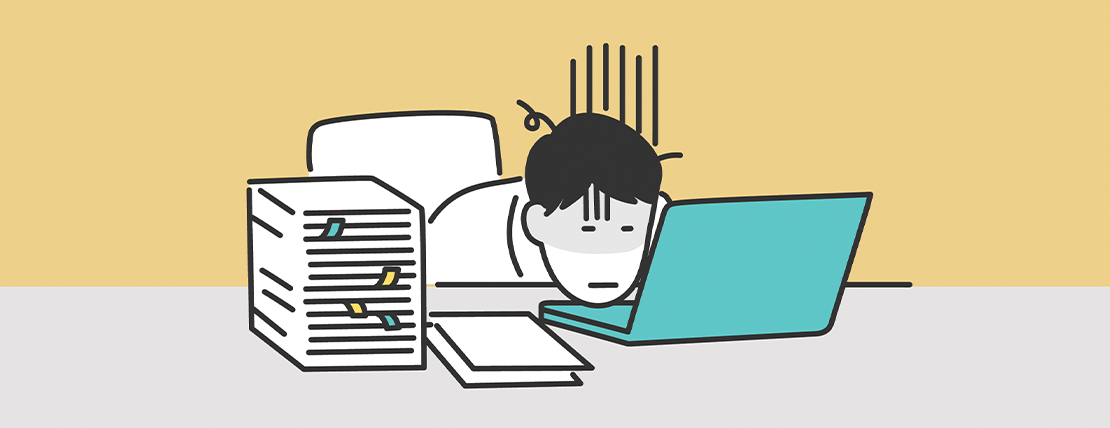When employers think of words to describe the ideal workplace and the interchange between managers and employees, and employees and their colleagues, “power struggle” would be at the very bottom of the list. Yet, unfortunately, this is what too many organizations are unwittingly heading toward.
Executives, managers and the workforce continue to struggle with navigating the multiple changes wrought by the pandemic — particularly the move toward hybrid work, which is here for the long haul.
This anxiety should come as no surprise. In general, change makes many people nervous and uncertain. Neuroscientists have shown that uncertainty hits our brain much like making an error, and we feel stressed until it’s corrected.
Stress levels at work are climbing, according to the recent LifeWorks Mental Health Index (MHI), which is based on a survey of 5,000 working Americans. In September, the overall MHI level fell after a slow-but-steady five-month improvement. This dip was driven by lower productivity and worsening feelings of depression, anxiety and isolation.
“While many employers care about the needs of their employees, employees might question that caring if the employer’s behavior does not clearly demonstrate it. The MHI data found that nearly half (46%) of employees said their employer has not even asked them about their working preferences.”
In many places, internal stress is manifesting itself as conflict in the world around us. Airline passengers are more frequently assaulting flight attendants, parents are screaming at school administrators about mask mandates and workers are feeling increasingly disengaged and at odds with their employers.
Thus, the power struggle.
Whether it’s explicit or implicit, some employers may not be recognizing the volatility of the situation. Power struggles are more likely when one or both parties feel misunderstood, underappreciated, under-supported or without control.
All of this is amplified in situations that are uncertain. Some employers are addressing the uncertainty with very clear rules. This may work well for some. But, remember, the underlying issue is a population that is feeling misunderstood, underappreciated, under-supported or without control. If these issues are not considered, problems will continue to pop up.
Given the volatility of the situation, what can leaders and their organizations do to successfully transition to a flexible workplace? How can they enhance employee well-being, defuse conflict, improve recruiting and retention, upgrade employee engagement and, ultimately, drive greater productivity?
Align Your Mentality with Reality
If you are looking forward to the day when we will all go back to working like it’s 2019 again, it’s time to put that perception aside. Time does not move backward.
One way that people successfully manage significant change and even trauma is to not ignore it, but to take that experience and build it into their lives. The pandemic has changed our collective lives, and now it’s time to deal with moving forward amid these changes. For organizations, that means intentionally rethinking the employer-employee relationship and what it means.
Empathy Is Critical
Empathy can be achieved with true dialogue, the intention to support individual well-being and an openness to mutually beneficial flexibility. Each one of these points is important.
The September MHI survey showed employees expressing a desire for work flexibility. More than one-quarter want to see flexibility in working hours (27%), which is about the same percentage as those wanting flexibility in working loca- tion (26%). Parents were more than 80% more likely than non-parents to report wanting flexibility in location and 60% more likely to want flexibility in hours.
While many employers care about the needs of their employees, employees might question that caring if the employer’s behavior does not clearly demonstrate it. The MHI data found that nearly half (46%) of employees said their employer has not even asked them about their working preferences.
The first place to start with adapting to this new reality is to listen to your employees and engage in a two-way dialogue. Organizations have seen the benefits of empowering managers to have these conversations with their entire teams and one-on-one with employees about what they want and what they value — and then report up to leadership.
Ensure Well-Being Is High on the Agenda
As an employer, clearly, you’ve always needed people to be at their best. But that’s even more critical now, given the massive changes surrounding hybrid or remote work. Most hybrid/remote employees feel more accountable as individuals than they ever have been, which adds pressure to their lives. And for employees who are working mostly remotely, they are missing the sense of physical community that supported them before the pandemic.
The answer for employers is to prioritize well-being to help ensure that the touchpoints employees do have with the organization and their managers are more meaningful. Employers should design and implement a broad well-being strategy that considers employees’ well-being at every step along the journey — not just in periods of change. Employees should have easy access to individualized digital well-being services, including 24-hour availability to counselors via a laptop or smartphone.
The strategy should also consider not just mental-health needs, but also social, financial and physical health. It’s all about maintaining a “balanced diet” for employees’ minds. COVID-19 lockdowns forced many of us to restrict our lives — work and kids, work and cooking. However, going forward, hybrid employees will need myriad activities to get a balanced well-being diet.
“The answer for employers is to prioritize well-being to help ensure that the touchpoints employees do have with the organization and their managers are more meaningful. Employers should design and implement a broad well-being strategy that considers employees’ well-being at every step along the journey — not just in periods of change.”
Mental Health Issues Remain a Concern
The proportion of the American working population that is at high risk for mental health issues rose from 14% in 2019 to 27% in 2021. With that, the need for counselling and other supportive resources is essential. Employers can play a significant and meaningful role in the lives of their people by offering a continuum of high-quality and easily accessible resources.
Many employers have employee assistance programs (EAPs) but may take the EAP for granted, and not promote it consistently. EAPs help people at risk of suicide every day. EAPs also provide the safety and intervention that changes the course of lives for individuals and families every day. EAPs also offer people strategies to focus so they can deal with difficult issues while continuing to work productively. This also happens every day. Additionally, some EAPs have evolved considerably in the scope and depth of support they provide. Employers would do well to showcase these services to their employees and support their use.
Monitor, Measure and Manage
Instituting well-being programs for well-being’s sake may be idealistic, but it’s not sustainable. Over the long term, it’s critical to measure the impact your programs are having on employees.
Surveys, focus groups and manager meetings can help you get information on key performance indicators. With employees working remotely more often, it is imperative to consistently and proactively monitor which of your tactics are working and which are not.
The COVID-19 crisis has disrupted everyone’s lives, both at work and at home. But if there is one silver lining to the pandemic, it’s that we as leaders are more aware of the need to focus on well- being for our workforces.
We shouldn’t assume that employees will feel engaged, motivated and happy just because they are working remotely. This change leads to uncertainty, which causes stress. But by acknowledging this reality and implementing strategies to address it, smart organizations can end the power struggles that threaten all of us by aligning everyone on the right path to well-being.




